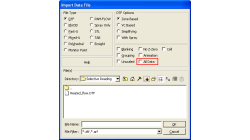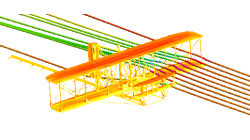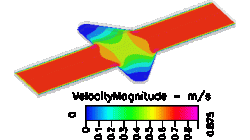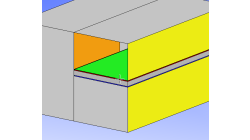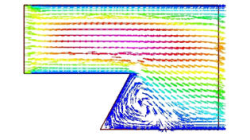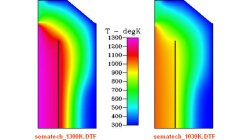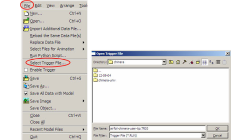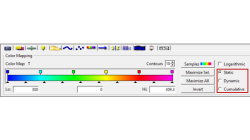- Home
- Resources
- Tips & Tricks
Tips & Tricks
Selective Reading for DTF import in CFD-VIEW
When managing a model with complex geometry and/or physics, have you ever wondered how you could simplify the post-processing? You can do it easily using the selective reading capability in CFD-VIEW.
Abraham
Meganathan
CFD
Using the Clone Feature in CFD-VIEW
As the name suggests, the Clone operator creates an exact copy of the input object. The input object could be a surface (iso-surface, plane cut, geometry surface, border object) or a volume. The drawing style of this copy (or copies) is completely independent from that of the original.
Abraham
Meganathan
CFD
Using the Particle Trace Feature in CFD-VIEW
You can use the Particle Trace option in CFD-VIEW to enhance your flow visualization presentations. The use of this feature allows the display of more than one streamline and can be used in one, two, or three directions (but normally used in one or two directions).
Abraham
Meganathan
CFD
Mirroring Tool in CFD-VIEW
One should always take advantage of geometric and solution symmetry to model just one-half or one-fourth of the computational domain to reduce the computational time by significantly reducing the size of the model. After modeling half or one fourth of the model, you always want to present data for the full model.
Abraham
Meganathan
CFD
CFD-VIEW re-pick buffer feature for object selection
When post-processing complex geometries in CFD-VIEW where there are multiple objects close to each other, it is not always easy to pick the correct one, unless you zoom in a lot. To avoid having to zoom in and zoom out many times, you can use the re-pick buffer feature.
Abraham
Meganathan
CFD
Point Net Feature in CFD-VIEW
A Point Net is primarily used for creating an evenly spaced vector field over existing 3D volumes, 2D surfaces (if the domain is two-dimensional), or cutting planes. The Point Net creates a set of points over the selected entity, and the simulation variable values (such as pressure, temperature, etc.) at these points are derived by interpolation on the underlying mesh.
Abraham
Meganathan
CFD
Importing Multiple DTF Files into a Single Viewer in CFD-VIEW
In certain situations, it may be useful to view multiple DTF files in one viewer in CFD-VIEW. Some reasons could be that parametric studies have been performed on the geometry or you would like to view two different results for the same model, i.e. look at flow velocity and pressure simultaneously.
Abraham
Meganathan
CFD
Updating and Animating a Developing Steady State Simulation in CFD-VIEW
Many users who are running steady-state simulations like to watch the results develop. Most of the time, users hit the "Reload the Same Data File(s)" button again and again. You will be happy to hear that there are two easier ways to do it.
Abraham
Meganathan
CFD
CFD-VIEW Colormap Options: Static, Dynamic, and Cumulative
The Colormap Settings panel in CFD-VIEW assigns colors to data sets. Identical data values on an object are displayed with the same color if they are using the same colormap display. Three options offer the user the opportunity to select the mode for updating the colormap as the underlying data changes, for example during transient simulations.
Abraham
Meganathan
CFD
Saving Surface Data to a View Object File
Often, it is useful or necessary to take data on a surface and perform further calculations on this data using another software package. To enable you to write this type of data, CFD-VIEW has a View Object File format ("*.vof"). CFD-VIEW uses this file format to store the X, Y, and Z locations of the nodes on the surface along with the associated data that was written to the DTF (e.g. U, V, W, P, etc.)
Abraham
Meganathan
CFD
